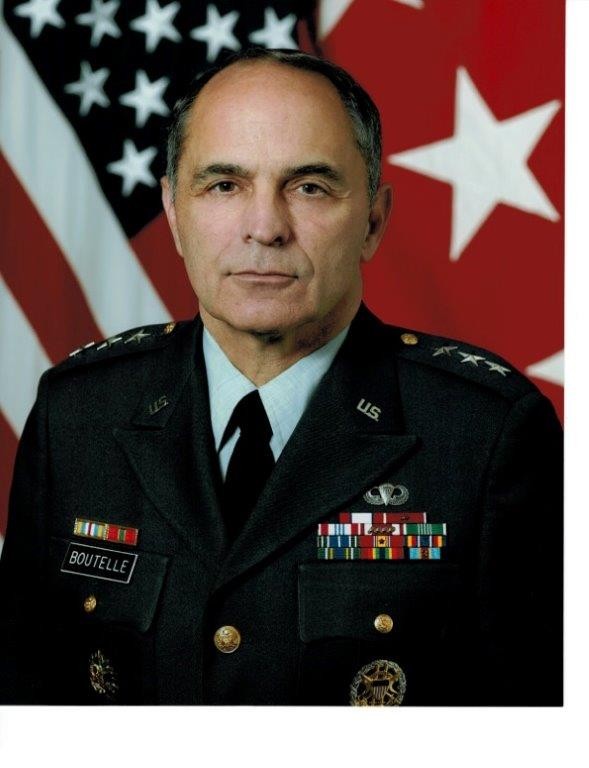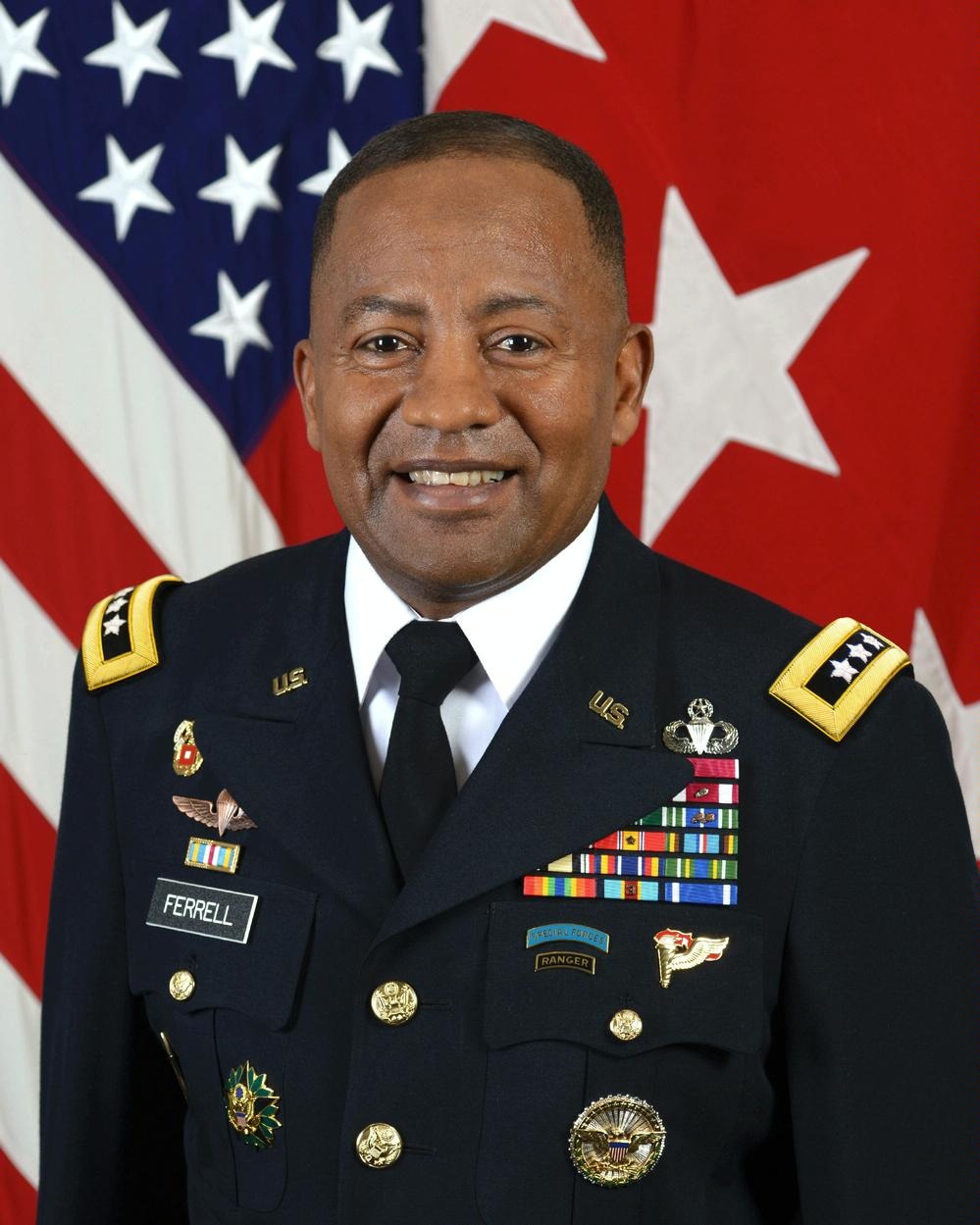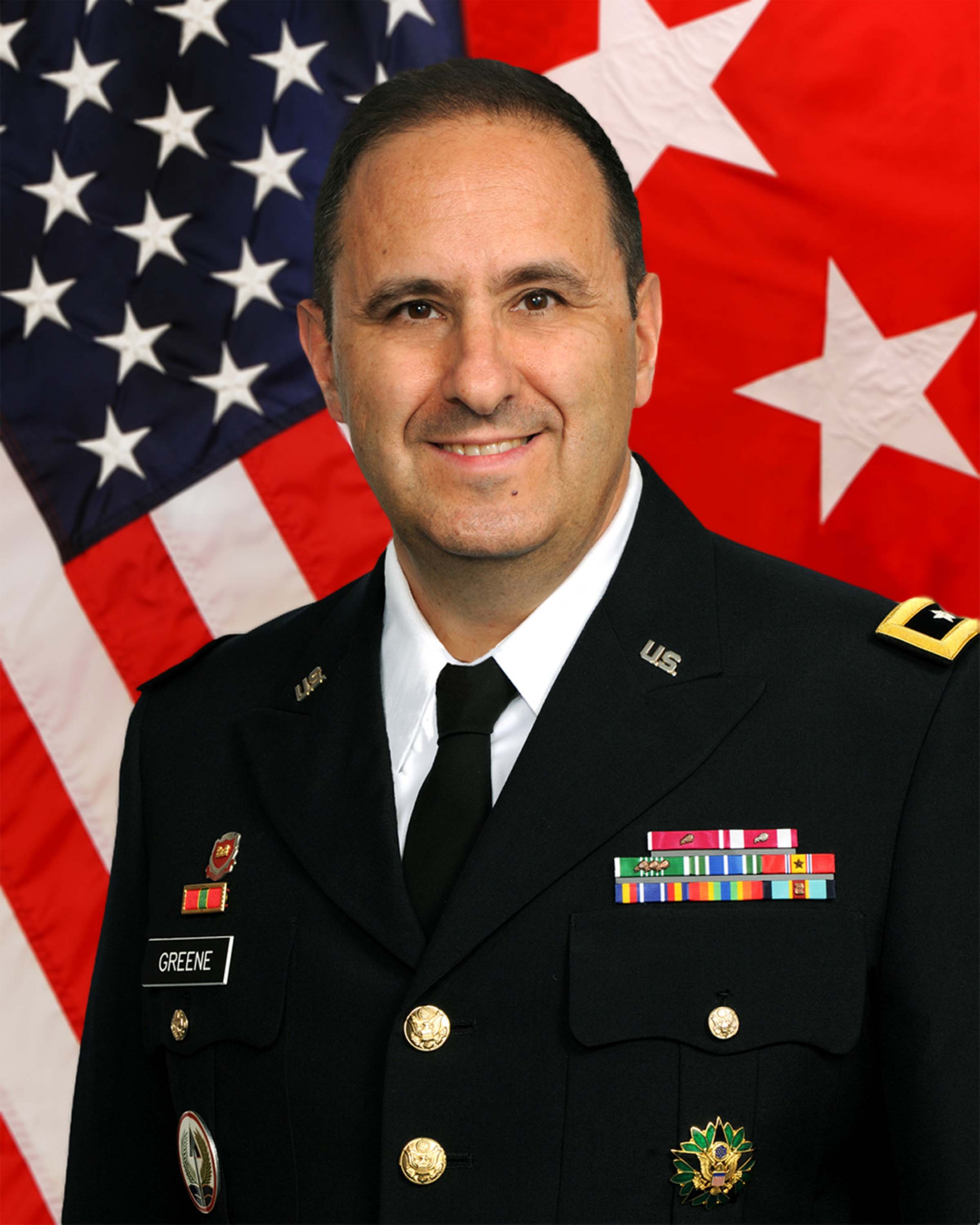2022 Hall of Fame Inductees
LTG (R) Steven W. Boutelle
Program Executive Officer, Command, Control and Communications Systems
1997-2001

During Lieutenant General (Retired) Steven W. Boutelle’s 38-year Army career, he provided outstanding leadership at all levels from battalion communications officer through Chief Information Officer/G6 of the U.S. Army. He was a prodigious change agent while at Fort Monmouth, NJ for most of the 1990s, transforming the tactical Army to a digitized force and building teams of C5ISR professionals, who continued his initiatives throughout the C5ISR domains. He served as “Trail Boss” in the Central Technical Support Facility at Fort Hood, TX with responsibility for leading a non-stop operation to integrate and test the 72 digital systems participating in Task Force XXI experiments to validate concepts for “Digitizing the Army.” After selection for Brigadier General in 1997, Boutelle served as Program Executive Officer, Command, Control and Communications Systems (PEO C3S) with responsibility for development, acquisition, and fielding of C3 systems for tactical forces for four years. He accelerated introduction of then-current technology into his portfolio of programs and continued to make ever-lasting progress in digitizing the force. Most notable were his capstone contributions as the longest serving Army CIO/G6 from July 2003 to July 2007. His brilliant leadership during a period of two concurrent wars ensured rapid delivery of solutions to meet warfighters’ needs. He was the catalyst for modernizing the Army’s information technology and network infrastructure worldwide. His military decorations include two awards of the Distinguished Service Medal, two awards of the Legion of Merit, and numerous additional medals.
Watch Video InterviewMr. Charles E. Christianson
1969-2003
Intelligence and Information Warfare Directorate, Communications Electronics Research, Development, and Engineering Center
Central programs manager for Army, DARPA and SDIO Electric Armament Technology
Deputy Project Manager, Electronic Warfare/Reconnaissance, Surveillance and Target Acquisition
Chief Systems Engineer, PEO Intelligence and Electronic Warfare & Sensors

Mr. Charles E. Christianson’s enduring 50-year career contributed to the development and fielding of more than 100,000 products which pervade the entirety of the Department of Defense and its allies. His technical knowledge is second to none, especially in the area of Radar and Signals Intelligence systems. His work during Operation Desert Shield/Storm as well as during the Counter Terrorism/Counter Insurgency operations in Iraq, Afghanistan, and other locations world-wide saved the lives and enhanced the effectiveness of U.S. and coalition warfighters. As the Lead Systems Engineer for the PEO-Intelligence, Electronic Warfare and Sensors (PEO IEW&S) during 9/11 and initial stages of Operations Iraqi and Enduring Freedom, Mr. Christianson was instrumental in answering the challenge of delivering numerous ISR systems designed to meet the stringent and complex requirements of the COIN threats Soldiers were being faced with in both Iraq and Afghanistan. Mr. Christianson used his extensive knowledge and experience to advance the development and fielding of some of the most critically needed equipment supporting Task Force Observe, Detect, Identify, and Reconnaissance, Surveillance and Target Acquisition mission profiles. He provided direct support to the Combat Capabilities Development Command (DEVCOM) leadership on the development and utilization of the Test Bed and help support Department of the Army leadership as well as numerous COCOM commanders to develop multi domain operations technologies/materiel enabling doctrine and operating concepts for the 21st century warfighter.
Watch Video InterviewLTG (R) Robert S. Ferrell
Commanding General, U.S. Army Communications-Electronics Command
2012-2013

Lieutenant General (Retired) Robert S. Ferrell served as the Army Chief Information Officer/G-6 from December 2013 until his retirement in March 2017, culminating his 39 years as an Army communicator. As the CIO, he oversaw the Army’s $10 billion IT investments, managed enterprise IT architecture, established and enforced IT policies, and directed delivery of operational Command, Control, Communications, Computers or C4 IT capabilities to support warfighters and business users. As the G-6, he advised the Chief of Staff of the Army on the network, communications, signal operations, information security, force structure and equipping. Lieutenant General Ferrell was the first African-American to serve as the Army CIO/G-6. Immediately prior to that assignment, then Major General Ferrell served as the Commanding General of the U.S. Army Communications-Electronics Command (CECOM), and Senior Commander of Aberdeen Proving Ground, MD. During his tenure, his focus and priorities included providing support to Soldiers; taking care of people; partnering with the community; and positioning CECOM for an era of declining resources; all of which were achieved. Lieutenant General Ferrell’s notable awards include two awards of the Defense Superior Service Medal; three of the Legion of Merit; the Bronze Star Medal; and many more. He received the Silver Order of Mercury Award in 2014 from the Aberdeen Signal Corps Regimental Association, the Signal Corps Association’s highest award. In 2018 he was inducted into the Army ROTC Hall of Fame.
Watch Video InterviewMG Harold J. “Harry” Greene
Program Executive Officer, Intelligence, Electronic Warfare and Sensors
2007 – 2009
Deputy Commanding General, U.S. Army Research, Development and Engineering Command
2008-2011
Program Manager, Program Executive Office, Command, Control, Communications-Tactical, Battle Command
2005-2008

Major General Harold J. “Harry” Greene served our Nation and our Army in uniform for over 34 years. Nearly a third of his Army career contributed both directly and indirectly to Army C5ISR in countless impactful ways, serving in key leadership roles. As Product Manager Aerial Common Sensor, Project Manager Battle Command, Deputy Commanding General RDECOM (now DEVCOM) and Program Executive Officer Intelligence, Electronic Warfare & Sensors (PEO IEW&S) he led multi-functional teams of civilians, military, and industry partners to deliver state of the art capability to warfighters. Major General Greene was particularly adept at understanding complex details as well as the overall system and how it delivered capability to warfighters. As PEO IEW&S, Major General Greene brought his command philosophy, keen technical mind, and experience developing and fielding complex battle command system of systems to the sensors, intelligence management and electronic warfare portfolio. He saw the “big picture” and the need for all C5ISR systems to work together in support of the warfighter. In his final assignment as the Deputy Commanding General Combined Security Transition Command – Afghanistan, he leveraged all his previous experience to deliver needed equipment, training, sustainment and facilities, to include C5ISR capabilities, to Afghan National Security Forces in theater. On 5 August 2014, Major General Harry Greene was killed in action in Kabul, Afghanistan while doing what he did best – leading from the front, boots on the ground.
Watch Video InterviewMr. Gary P. Martin
Program Executive Officer, Command, Control, Communications-Tactical
2015-2018
Deputy to the Commanding General, U.S. Army Communications-Electronics Command
2011-2015
Executive Director to the Commanding General, U.S. Army Research, Development and Engineering Command
2008-2011
Technical Director, U.S. Army Communications-Electronics Reasearch Development and Engineering
2005-2008
.jpg)
Over a 34-year federal career, Mr. Gary P. Martin worked for various Army missions, primarily in Command, Control, Communications, Computers, Cyber, Intelligence, Surveillance and Reconnaissance (C5ISR) organizations, delivering critical information and communication technology capability to the American Soldier. From 2015 to 2018, Mr. Martin served as the Program Executive Officer for Command, Control, Communications–Tactical (PEO C3T). Mr. Martin guided a workforce whose mission was to acquire, field and support the communication networks, radios, satellite systems and other hardware and software Soldiers require for information dominance on the battlefield. During his tenure, he was credited with leading a workforce whose contributions were at work every day in every theater of operation. Prior to serving as the PEO C3T, Mr. Martin was the U.S. Army Communications-Electronics Command (CECOM) Deputy to the Commanding General from 2011 to 2015, where he worked with the commander in the development and execution of organizational goals, objectives, and policies to provide world-class, integrated C5ISR solutions to the Soldier. During his service as the CECOM DCG, he received the 2012 Presidential Rank Award – Distinguished Executive, recognizing him for his extraordinary sustained accomplishments as one of the Army’s highest-performing senior executives. He was one of only 46 SES members, out of 6,800, receiving this award. Mr. Martin’s other notable C5ISR leadership positions include serving as the Technical Director, Communications-Electronics Research Development and Engineering Center (CERDEC) from 2005 through 2008 where he was responsible for science and technology programs developing advanced C5ISR capabilities.
Watch Video Interview


